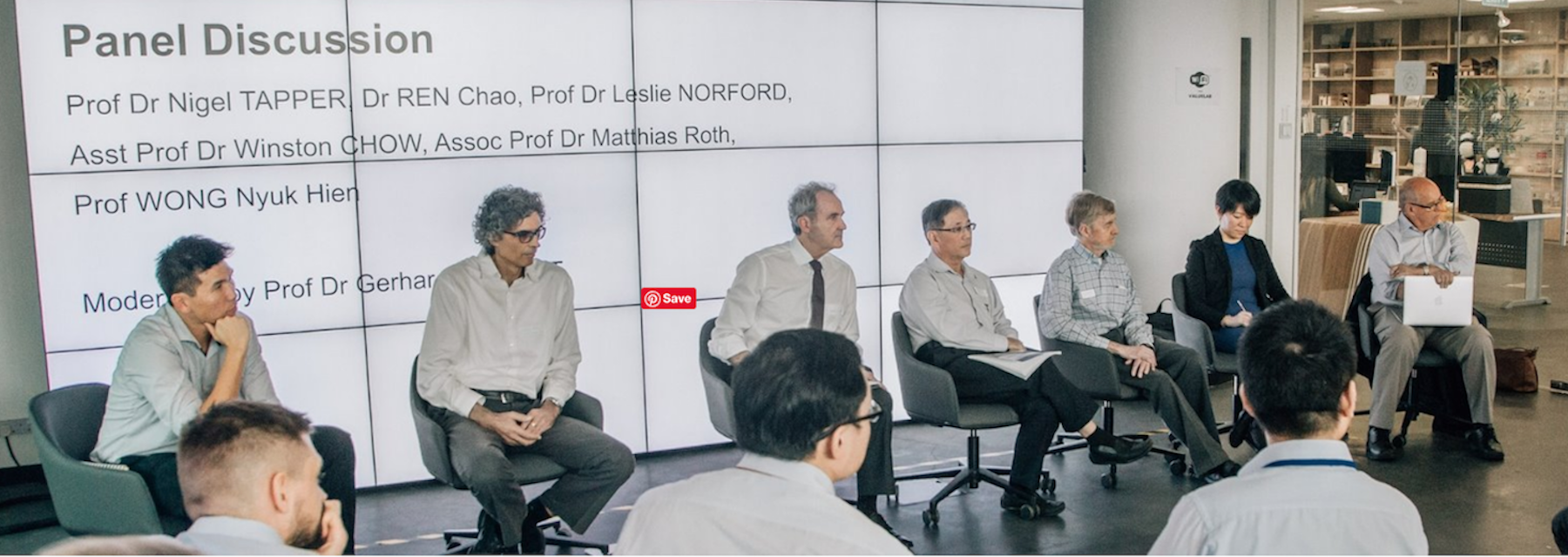Cooling Singapore in URA's Skyline
URA's Skyline magazine featured the Cooling Singapore project's efforts to beat the heat

The latest issue of the Urban Redevelopment Authority (URA) Skyline magazine featured the external page Cooling Singapore project's multidisciplinary approach to address the urban heat island (UHI) effect in Singapore and to mitigate the outdoor thermal comfort (OTC), as well as how the project reaches out to government agencies and citizens.
In the article external page Ways to beat the heat, project leader Dr Heiko Aydt and project coordinator Dr Conrad Philipp explained the causes of heat in Singapore, how the project measures the heat, possible ways to reduce the heat, the different ways in which the project reaches out to the government agencies and citizens, and what is next for the project.
The Cooling Singapore project, funded by the National Research Foundation (NRF)’s CREATE programme, is led by the Singapore-ETH Centre and brings together researchers from the Singapore-MIT Alliance for Research and Technology, TUMCREATE (by the Technical University of Munich), and the National University of Singapore.
Outreach
Cooling Singapore has undertaken social campaigns to study the relationship between climate, urban space and people. The social campaigns were conducted in collaboration with the Singapore University of Technology and Design (SUTD) Lee Kuan Yew Centre for Innovative Cities, non-profit design group Participate in Design, as well as with residents in Punggol.
Our research wouldn’t be complete if we aren’t involving people in engagement studies, workshops and also surveys, in order to figure out how people feel about it and also about how open they are to certain mitigation measures. Dr Heiko Aydt
As part of the project, a task force was created, which consisted of representatives from a range of government agencies such as the URA, Housing and Development Board, National Parks Board, Building and Construction Authority and the National Environment Agency and universities such as the SUTD and Nanyang Technological University. Dr Philipp mentioned that Cooling Singapore has an ongoing study with URA where the improvement of thermal comfort by stimulating wind flow through means such as increasing the heights of shaded pathways is being explored.
“The idea was to bring together all these different agency representatives who have expertise from their specific domains to keep us grounded in reality and provide important feedback for our studies.”Dr Heiko Aydt
What can be done
For people who want to help reduce UHI in their everyday lives, Heiko suggests setting their air-conditioning temperature at least 4°C higher. If everyone in Singapore were to do this, the combined effect would be notable. Businesses, in addition to raising the air-conditioning temperatures, can also consider painting their buildings in lighter colours to reflect more of the sun’s rays.
What's next
Dr Aydt mentioned the plans for a second phase for the project, which would address the gaps and widen the scope of the first phase with additional economic expertise to answer questions such as, ‘What is the economic impact if we were to increase the temperature by a certain degree?'. An educational component through courses would be beneficial if the team can share their knowledge with policy makers and others who can make a difference. He said that Singapore can be developed as a role model in this area, whereby concepts and ideas that were developed here could be exported to other cities.